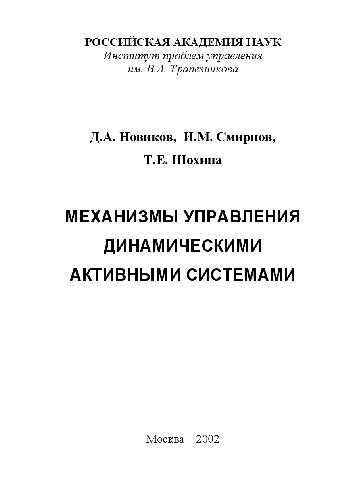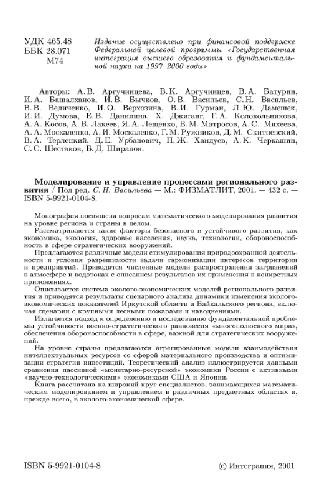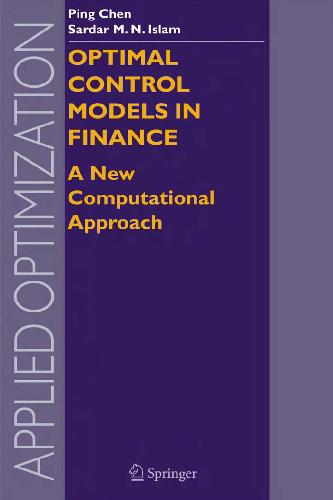Riccardo Rebonato0470091398, 9780470091395, 9780470091401
The new and updated material includes a critical examination of the ‘perfect-replication’ approach to derivatives pricing, with special attention given to exotic options; a thorough analysis of the role of quadratic variation in derivatives pricing and hedging; a discussion of the informational efficiency of markets in commonly-used calibration and hedging practices. Treatment of new models including Variance Gamma, displaced diffusion, stochastic volatility for interest-rate smiles and equity/FX options.
The book is split into four parts. Part I deals with a Black world without smiles, sets out the author’s ‘philosophical’ approach and covers deterministic volatility. Part II looks at smiles in equity and FX worlds. It begins with a review of relevant empirical information about smiles, and provides coverage of local-stochastic-volatility, general-stochastic-volatility, jump-diffusion and Variance-Gamma processes. Part II concludes with an important chapter that discusses if and to what extent one can dispense with an explicit specification of a model, and can directly prescribe the dynamics of the smile surface.
Part III focusses on interest rates when the volatility is deterministic. Part IV extends this setting in order to account for smiles in a financially motivated and computationally tractable manner. In this final part the author deals with CEV processes, with diffusive stochastic volatility and with Markov-chain processes.
Praise for the First Edition:
“In this book, Dr Rebonato brings his penetrating eye to bear on option pricing and hedging.… The book is a must-read for those who already know the basics of options and are looking for an edge in applying the more sophisticated approaches that have recently been developed.” —Professor Ian Cooper, London Business School
“Volatility and correlation are at the very core of all option pricing and hedging. In this book, Riccardo Rebonato presents the subject in his characteristically elegant and simple fashion…A rare combination of intellectual insight and practical common sense.” —Anthony Neuberger, London Business School
Table of contents :
Volatility and Correlation 2(nd) Edition……Page 4
Contents……Page 10
0.1 Why a Second Edition?……Page 24
0.2 What This Book Is Not About……Page 26
0.4 The New Subtitle……Page 27
Acknowledgements……Page 30
I Foundations……Page 32
1.1.1 What Are Models For?……Page 34
1.1.2 The Fundamental Approach……Page 36
1.1.3 The Instrumental Approach……Page 38
1.1.4 A Conundrum (or, ‘What is Vega Hedging For?’)……Page 39
1.2.1 The Three Forms of the EMH……Page 40
1.2.2 Pseudo-Arbitrageurs in Crisis……Page 41
1.2.3 Model Risk for Traders and Risk Managers……Page 42
1.2.4 The Parable of the Two Volatility Traders……Page 43
1.3.1 Different Users of Derivatives Models……Page 45
1.3.2 In-Model and Out-of-Model Hedging……Page 46
1.4 The Calibration Debate……Page 48
1.4.1 Historical vs Implied Calibration……Page 49
1.4.2 The Logical Underpinning of the Implied Approach……Page 50
1.4.3 Are Derivatives Markets Informationally Efficient?……Page 52
1.4.4 Back to Calibration……Page 57
1.5 Across-Markets Comparison of Pricing and Modelling Practices……Page 58
1.6 Using Models……Page 61
2.1 The Bedrock of Option Pricing……Page 62
2.2.2 The Portfolio-Replication Argument (Deterministic Volatility)……Page 63
2.2.3 The Market Price of Risk with Deterministic Volatility……Page 65
2.2.4 Link with Expectations – the Feynman–Kac Theorem……Page 67
2.3 Binomial Replication……Page 69
2.3.1 First Approach – Replication Strategy……Page 70
2.3.2 Second Approach – ‘Naive Expectation’……Page 72
2.3.3 Third Approach – ‘Market Price of Risk’……Page 73
2.3.4 A Worked-Out Example……Page 76
2.3.5 Fourth Approach – Risk-Neutral Valuation……Page 77
2.3.6 Pseudo-Probabilities……Page 79
2.3.7 Are the Quantities π(1) and π(2) Really Probabilities?……Page 80
2.3.8 Introducing Relative Prices……Page 82
2.3.9 Moving to a Multi-Period Setting……Page 84
2.3.10 Fair Prices as Expectations……Page 87
2.3.11 Switching Numeraires and Relating Expectations Under Different Measures……Page 89
2.3.12 Another Worked-Out Example……Page 92
2.3.13 Relevance of the Results……Page 95
2.4.1 How To Recognize a Jump When You See One……Page 96
2.5.1 An Intuitive Argument……Page 100
2.5.2 A Worked-Out Example……Page 101
2.6 Switching Between the PDE, the Expectation and the Binomial Replication Approaches……Page 104
3.2 Definition of Market Terms……Page 106
3.3 Hedging Forward Contracts Using Spot Quantities……Page 108
3.3.1 Hedging Equity Forward Contracts……Page 109
3.3.2 Hedging Interest-Rate Forward Contracts……Page 110
3.4 Hedging Options: Volatility of Spot and Forward Processes……Page 111
3.5 The Link Between Root-Mean-Squared Volatilities and the Time-Dependence of Volatility……Page 115
3.6.1 The Equity/FX Case……Page 116
3.6.2 The Interest-Rate Case……Page 117
3.7 Summary of the Definitions So Far……Page 118
3.8 Hedging an Option with a Forward-Setting Strike……Page 120
3.8.1 Why Is This Option Important? (And Why Is it Difficult to Hedge?)……Page 121
3.8.2 Valuing a Forward-Setting Option……Page 122
3.9.1 Definition……Page 126
3.9.2 Properties of Variations……Page 127
3.9.4 Links between Quadratic Variation and (T)(t) σ(u)(2) du……Page 128
3.9.5 Why Quadratic Variation Is So Important (Take 1)……Page 129
4.1 Introduction and Plan of the Chapter……Page 132
4.2 Hedging a Plain-Vanilla Option: General Framework……Page 133
4.2.1 Trading Restrictions and Model Uncertainty: Theoretical Results……Page 134
4.2.3 The Methodology……Page 135
4.3 Hedging Plain-Vanilla Options: Constant Volatility……Page 137
4.3.1 Trading the Gamma: One Step and Constant Volatility……Page 139
4.3.2 Trading the Gamma: Several Steps and Constant Volatility……Page 145
4.4.1 Views on Gamma Trading When the Volatility is Time Dependent……Page 147
4.4.2 Which View Is the Correct One? (and the Feynman–Kac Theorem Again)……Page 150
4.5.1 Analysing the Replicating Portfolio……Page 152
4.5.2 Hedging Results: the Time-Dependent Volatility Case……Page 153
4.5.3 Hedging with the Wrong Volatility……Page 156
4.6 Robustness of the Black-and-Scholes Model……Page 158
4.7 Is the Total Variance All That Matters?……Page 161
4.8 Hedging Plain-Vanilla Options: Mean-Reverting Real-World Drift……Page 162
4.9.1 The Crouhy–Galai Set-Up……Page 166
5.1 Correlation, Co-Integration and Multi-Factor Models……Page 172
5.1.1 The Multi-Factor Debate……Page 175
5.2 The Stochastic Evolution of Imperfectly Correlated Variables……Page 177
5.3.1 Defining Stochastic Integrals……Page 182
5.3.2 Case 1: European Option, One Underlying Asset……Page 184
5.3.3 Case 2: Path-Dependent Option, One Asset……Page 186
5.3.4 Case 3: Path-Dependent Option, Two Assets……Page 187
5.4 Generalizing the Results……Page 193
5.5 Moving Ahead……Page 195
II Smiles – Equity and FX……Page 196
6.1 Plan of the Chapter……Page 198
6.2 Background and Definition of the Smile……Page 199
6.3.1 Delta- and Vega-Hedging a Plain-Vanilla Option……Page 200
6.3.2 Pricing a European Digital Option……Page 203
6.4 Hedge Ratios for Plain-Vanilla Options in the Presence of Smiles……Page 204
6.4.1 The Relationship Between the True Call Price Functional and the Black Formula……Page 205
6.4.2 Calculating the Delta Using the Black Formula and the Implied Volatility……Page 206
6.4.3 Dependence of Implied Volatilities on the Strike and the Underlying……Page 207
6.4.4 Floating and Sticky Smiles and What They Imply about Changes in Option Prices……Page 209
6.5 Smile Tale 1: ‘Sticky’ Smiles……Page 211
6.6 Smile Tale 2: ‘Floating’ Smiles……Page 213
6.6.1 Relevance of the Smile Story for Floating Smiles……Page 214
6.7.1 Motivation……Page 215
6.7.2 The Importance of an Assessment of Risk Aversion for Model Building……Page 216
6.7.3 The Principle of Absolute Continuity……Page 217
6.7.5 A Stylized Example: First Version……Page 218
6.7.6 A Stylized Example: Second Version……Page 225
6.7.8 Overall Conclusions……Page 227
6.7.9 The EMH Again……Page 230
7.1.1 ‘Fundamental’ and ‘Derived’ Analyses……Page 232
7.1.2 A Methodological Caveat……Page 233
7.2.1 Direct Static Information……Page 234
7.2.3 Direct Dynamic Information……Page 235
7.2.4 Indirect Information……Page 236
7.3.2 Subtler Effects……Page 237
7.4.1 Basic Facts……Page 253
7.4.2 Subtler Effects……Page 255
7.5.2 Subtler Effects……Page 258
7.6 Conclusions……Page 266
8.1 Fully-Stochastic-Volatility Models……Page 268
8.2 Local-Volatility (Restricted-Stochastic-Volatility) Models……Page 270
8.3.1 Discrete Amplitude……Page 272
8.3.2 Continuum of Jump Amplitudes……Page 273
8.5 Mixing Processes……Page 274
8.5.1 A Pragmatic Approach to Mixing Models……Page 275
8.6.1 Tight Bounds with Known Quadratic Variation……Page 276
8.7 The Importance of the Quadratic Variation (Take 2)……Page 277
9.2 Analytic Expressions for Calls vs Process Specification……Page 280
9.3 Direct Use of Market Prices: Pros and Cons……Page 281
9.4 Statement of the Problem……Page 282
9.5 Fitting Prices……Page 283
9.6 Fitting Transformed Prices……Page 285
9.7.1 The Problem with Fitting the Implied Volatilities……Page 286
9.8 Fitting the Risk-Neutral Density Function – General……Page 287
9.8.1 Does It Matter if the Price Density Is Not Smooth?……Page 288
9.8.2 Using Prior Information (Minimum Entropy)……Page 289
9.9 Fitting the Risk-Neutral Density Function: Mixture of Normals……Page 290
9.9.1 Ensuring the Normalization and Forward Constraints……Page 292
9.9.2 The Fitting Procedure……Page 295
9.10.2 Fitting to Theoretical Prices: Stochastic-Volatility Density……Page 296
9.10.3 Fitting to Theoretical Prices: Variance–Gamma Density……Page 299
9.10.4 Fitting to Theoretical Prices: Jump–Diffusion Density……Page 301
9.10.5 Fitting to Market Prices……Page 303
9.11 Is the Term Really a Delta?……Page 306
9.12 Fitting the Risk-Neutral Density Function: The Generalized-Beta Approach……Page 308
9.12.1 Derivation of Analytic Formulae……Page 311
9.12.2 Results and Applications……Page 318
9.12.3 What Does This Approach Offer?……Page 322
10.2 The BJN Framework for Bounding Option Prices……Page 324
10.3.1 Assumptions and Definitions……Page 325
10.3.2 Establishing Bounds……Page 328
10.3.3 Recasting the Problem……Page 329
10.3.4 Finding the Optimal Hedge……Page 330
10.4 The BJN Approach: Numerical Implementation……Page 331
10.4.2 Building a BJN Tree for a Deterministic Diffusion……Page 332
10.4.3 Building a BJN Tree for a General Process……Page 335
10.4.4 Computational Results……Page 338
10.4.5 Creating Asymmetric Smiles……Page 340
10.4.6 Summary of the Results……Page 342
10.5.2 The Difference Between Diffusions and Jump–Diffusion Processes: the Sample Quadratic Variation……Page 343
10.5.4 The Link with Stochastic-Volatility Models……Page 345
10.5.6 The Link with Jump–Diffusion Models……Page 346
10.6 Conclusions (or, Limitations of Quadratic Variation)……Page 347
11.1 General Considerations on Stochastic-Volatility Models……Page 350
11.3 The Dupire, Rubinstein and Derman-and-Kani Approaches……Page 352
11.4.1 Definition and Main Properties of Arrow–Debreu Prices……Page 353
11.4.2 Efficient Computation of Arrow–Debreu Prices……Page 355
11.5 The Derman-and-Kani Tree Construction……Page 357
11.5.1 Building the First Step……Page 358
11.5.2 Adding Further Steps……Page 360
11.6.1 Problem 1: Forward Price Greater Than S(up) or Smaller Than S(down)……Page 362
11.6.3 Problem 3: Arbitrariness of the Choice of the Strike……Page 363
11.7.1 Benchmarking 1: The No-Smile Case……Page 365
11.7.2 Benchmarking 2: The Time-Dependent-Volatility Case……Page 366
11.7.3 Benchmarking 3: Purely Strike-Dependent Implied Volatility……Page 367
11.7.4 Benchmarking 4: Strike-and-Maturity-Dependent Implied Volatility……Page 368
11.7.5 Conclusions……Page 369
11.8 Estimating Instantaneous Volatilities from Prices as an Inverse Problem……Page 374
12.1 Introduction……Page 376
12.1.2 Shortcomings……Page 377
12.2 The Modelling Framework……Page 378
12.3.1 Backward Induction……Page 380
12.3.2 Forward Equations……Page 381
12.3.3 Why Are We Doing Things This Way?……Page 383
12.3.4 Related Approaches……Page 385
12.4 Computational Results……Page 386
12.4.1 Are We Looking at the Same Problem?……Page 387
12.5 The Link Between Implied and Local-Volatility Surfaces……Page 388
12.5.1 Symmetric (‘FX’) Smiles……Page 389
12.5.2 Asymmetric (‘Equity’) Smiles……Page 392
12.6 Gaining an Intuitive Understanding……Page 399
12.6.1 Symmetric Smiles……Page 400
12.6.2 Asymmetric Smiles: One-Sided Parabola……Page 401
12.6.3 Asymmetric Smiles: Monotonically Decaying……Page 403
12.7 What Local-Volatility Models Imply about Sticky and Floating Smiles……Page 404
12.8.1 Constraints on the Implied Volatility Surface……Page 406
12.8.2 Consequences for Local Volatilities……Page 412
12.9 Empirical Performance……Page 416
12.10 Appendix I: Proof that……Page 417
13.2.1 Attempting to Extend the Portfolio Replication Argument……Page 420
13.2.2 The Market Price of Volatility Risk……Page 427
13.2.3 Assessing the Financial Plausibility of λ(σ)……Page 429
13.3 Mean-Reverting Stochastic Volatility……Page 432
13.3.1 The Ornstein–Uhlenbeck Process……Page 433
13.3.2 The Functional Form Chosen in This Chapter……Page 434
13.3.3 The High-Reversion-Speed, High-Volatility Regime……Page 435
13.4 Qualitative Features of Stochastic-Volatility Smiles……Page 436
13.4.1 The Smile as a Function of the Risk-Neutral Parameters……Page 437
13.5 The Relation Between Future Smiles and Future Stock Price Levels……Page 447
13.5.1 An Intuitive Explanation……Page 448
13.6.1 The Hedging Methodology……Page 449
13.6.2 A Numerical Example……Page 451
13.7 Actual Fitting to Market Data……Page 458
13.8 Conclusions……Page 467
14.1 Introduction……Page 470
14.2 The Financial Model: Smile Tale 2 Revisited……Page 472
14.3 Hedging and Replicability in the Presence of Jumps: First Considerations……Page 475
14.3.1 What Is Really Required To Complete the Market?……Page 476
14.4.1 The Stock Price Dynamics……Page 480
14.5.1 Hedging with a Bond and the Underlying Only……Page 486
14.5.2 Hedging with a Bond, a Second Option and the Underlying……Page 488
14.5.3 The Case of a Single Possible Jump Amplitude……Page 491
14.5.5 Determining the Function g Using the Implied Approach……Page 496
14.6 The Pricing Formula for Log-Normal Amplitude Ratios……Page 501
14.7 The Pricing Formula in the Finite-Amplitude-Ratio Case……Page 503
14.7.1 The Structure of the Pricing Formula for Discrete Jump Amplitude Ratios……Page 505
14.7.2 Matching the Moments……Page 506
14.7.3 Numerical Results……Page 507
14.8 The Link Between the Price Density and the Smile Shape……Page 516
14.8.1 A Qualitative Explanation……Page 522
14.9.1 The Smile as a Function of the Risk-Neutral Parameters……Page 525
14.9.2 Comparison with Stochastic-Volatility Smiles……Page 530
14.10 Jump–Diffusion Processes and Market Completeness Revisited……Page 531
14.11 Portfolio Replication in Practice: The Jump–Diffusion Case……Page 533
14.11.1 A Numerical Example……Page 534
14.11.2 Results……Page 535
14.11.3 Conclusions……Page 540
15.1 Who Can Make Best Use of the Variance–Gamma Approach?……Page 542
15.2.1 Definition……Page 544
15.2.3 Properties of the Variance–Gamma Process……Page 545
15.2.4 Motivation for Variance–Gamma Modelling……Page 548
15.2.5 Properties of the Stock Process……Page 549
15.2.6 Option Pricing……Page 550
15.3.2 The Risk-Neutral Distribution……Page 553
15.4 Features of the Smile……Page 554
15.5 Conclusions……Page 558
16.1 Introduction……Page 560
16.2.1 First Formulation……Page 561
16.3 Evolving the Underlying with Displaced Diffusions……Page 562
16.4 Option Prices with Displaced Diffusions……Page 563
16.5.1 A First Approximation……Page 564
16.5.3 Refining the Approximation……Page 565
16.5.4 Numerical Results with the Refined Approximation……Page 575
16.6.1 How Quickly is the Normal-Diffusion Limit Approached?……Page 584
16.7 Extension to Other Processes……Page 591
17 No-Arbitrage Restrictions on the Dynamics of Smile Surfaces……Page 594
17.1.1 Money For Nothing: A Degenerate Hedging Strategy for a Call Option……Page 595
17.1.2 Static Replication of a Continuous Double Barrier……Page 597
17.2 Analysis of the Cost of Unwinding……Page 602
17.3 The Trader’s Dream……Page 606
17.4 Plan of the Remainder of the Chapter……Page 612
17.5.1 Description of the Market……Page 613
17.5.2 The Building Blocks……Page 615
17.6.1 Equivalent Descriptions of a State of the World……Page 616
17.6.2 Consequences of Deterministic Smile Surfaces……Page 618
17.6.3 Kolmogorov-Compatible Deterministic Smile Surfaces……Page 619
17.6.4 Conditions for the Uniqueness of Kolmogorov-Compatible Densities……Page 620
17.6.5 Floating Smiles……Page 622
17.7 Stochastic Smiles……Page 624
17.7.1 Stochastic Floating Smiles……Page 625
17.7.2 Introducing Equivalent Deterministic Smile Surfaces……Page 626
17.7.3 Implications of the Existence of an Equivalent Deterministic Smile Surface……Page 627
17.8 The Strength of the Assumptions……Page 628
17.9 Limitations and Conclusions……Page 629
III Interest Rates – Deterministic Volatilities……Page 632
18.1 Introduction and Plan of the Chapter……Page 634
18.2 Why Mean Reversion Matters in the Case of Interest-Rate Models……Page 635
18.2.1 What Does This Mean for Forward-Rate Volatilities?……Page 637
18.3 A Common Fallacy Regarding Mean Reversion……Page 639
18.3.1 The Grain of Truth in the Fallacy……Page 640
18.4 The BDT Mean-Reversion Paradox……Page 641
18.5 The Unconditional Variance of the Short Rate in BDT – the Discrete Case……Page 643
18.6 The Unconditional Variance of the Short Rate in BDT–the Continuous-Time Equivalent……Page 647
18.7 Mean Reversion in Short-Rate Lattices: Recombining vs Bushy Trees……Page 648
18.8 Extension to More General Interest-Rate Models……Page 651
18.9 Appendix I: Evaluation of the Variance of the Logarithm of the Instantaneous Short Rate……Page 653
19.1 Introduction……Page 656
19.2.1 First Formulation: Each Forward Rate in Isolation……Page 657
19.2.2 Second Formulation: The Covariance Matrix……Page 659
19.2.3 Third Formulation: Separating the Correlation from the Volatility Term……Page 661
19.3 Link with the Principal Component Analysis……Page 662
19.4 Worked-Out Example 1: Caplets and a Two-Period Swaption……Page 663
19.5 Worked-Out Example 2: Serial Options……Page 666
19.6 Plan of the Work Ahead……Page 667
20.2 The Setting……Page 670
20.2.1 A Geometric Construction: The Two-Factor Case……Page 671
20.2.3 Re-Introducing the Covariance Matrix……Page 673
20.3 Fitting an Exogenous Correlation Function……Page 674
20.4.1 Fitting the Correlation Surface with a Three-Factor Model……Page 677
20.4.2 Fitting the Correlation Surface with a Four-Factor Model……Page 681
20.4.3 Fitting Portions of the Target Correlation Matrix……Page 685
20.5.2 The Set-Up……Page 690
20.6.1 The Strategy……Page 693
21.1 Introduction and Motivation……Page 698
21.2 The Link between Instantaneous Volatilities and the Future Term Structure of Volatilities……Page 699
21.3 A Functional Form for the Instantaneous Volatility Function……Page 702
21.3.1 Financial Justification for a Humped Volatility……Page 703
21.4 Ensuring Correct Caplet Pricing……Page 704
21.5 Fitting the Instantaneous Volatility Function: Imposing Time Homogeneity of the Term Structure of Volatilities……Page 708
21.6 Is a Time-Homogeneous Solution Always Possible?……Page 710
21.7 Fitting the Instantaneous Volatility Function: The Information from the Swaption Market……Page 711
21.8 Conclusions……Page 717
22.1 Why Is Estimating Correlation So Difficult?……Page 718
22.2 What Shape Should We Expect for the Correlation Surface?……Page 719
22.3 Features of the Simple Exponential Correlation Function……Page 720
22.4 Features of the Modified Exponential Correlation Function……Page 722
22.5 Features of the Square-Root Exponential Correlation Function……Page 725
22.7 Features of the Schonmakers–Coffey Approach……Page 728
22.8 Does It Make a Difference (and When)?……Page 729
IV Interest Rates – Smiles……Page 732
23.1 What Do We Want to Capture? A Hierarchy of Smile-Producing Mechanisms……Page 734
23.2 Are Log-Normal Co-Ordinates the Most Appropriate?……Page 735
23.2.1 Defining Appropriate Co-ordinates……Page 736
23.3 Description of the Market Data……Page 737
23.4 Empirical Study I: Transforming the Log-Normal Co-ordinates……Page 746
23.5 The Computational Experiments……Page 749
23.6 The Computational Results……Page 750
23.7 Empirical Study II: The Log-Linear Exponent……Page 752
23.9 Where Do We Go From Here?……Page 756
24.1 Introduction and Financial Motivation……Page 760
24.2 Analytical Characterization of CEV Processes……Page 761
24.3 Financial Desirability of CEV Processes……Page 763
24.4 Numerical Problems with CEV Processes……Page 765
24.5.2 Approximate Solutions: Transformation of Variables……Page 766
24.5.3 Approximate Solutions: the Predictor–Corrector Method……Page 767
24.6 Problems with the Predictor–Corrector Approximation for the LMM……Page 778
25.1 Plan of the Chapter……Page 782
25.2 What is the Dog and What is the Tail?……Page 784
25.4 The Approach……Page 785
25.5 Implementing and Calibrating the Stochastic-Volatility LMM……Page 787
25.5.2 Calibrating to Caplet Prices……Page 790
25.6 Suggestions and Plan of the Work Ahead……Page 795
26.1 Plan of the Chapter……Page 796
26.2 Assessing the Quality of a Model……Page 797
26.3.1 Description of the Data……Page 798
26.3.2 Results……Page 799
26.4 Extracting the Model-Implied Principal Components……Page 807
26.4.1 Results……Page 809
26.5 Discussion, Conclusions and Suggestions for Future Work……Page 812
27.2 The Proposed Extension……Page 814
27.3 An Aside: Some Simple Properties of Markov Chains……Page 816
27.3.1 The Case of Two-State Markov Chains……Page 818
27.4.1 Description of the Test Methodology……Page 819
27.4.2 Results……Page 821
27.5 How Important Is the Two-Regime Feature?……Page 829
27.6 Conclusions……Page 832
Bibliography……Page 836
Index……Page 844







Reviews
There are no reviews yet.